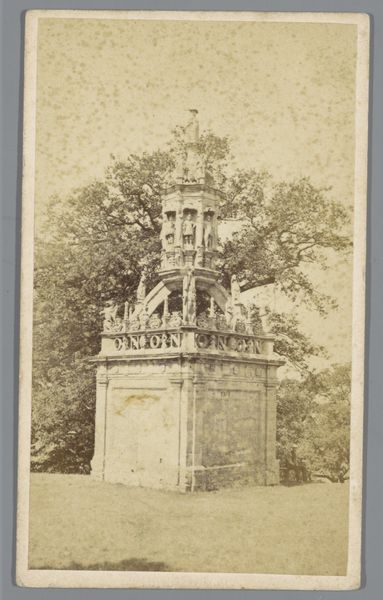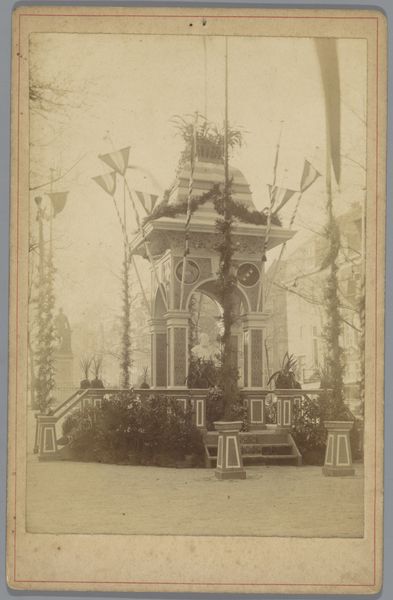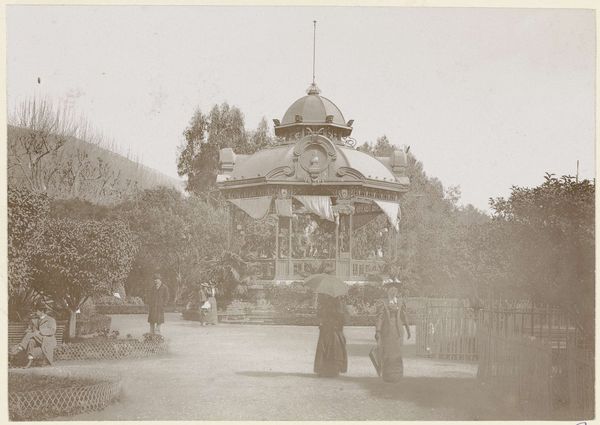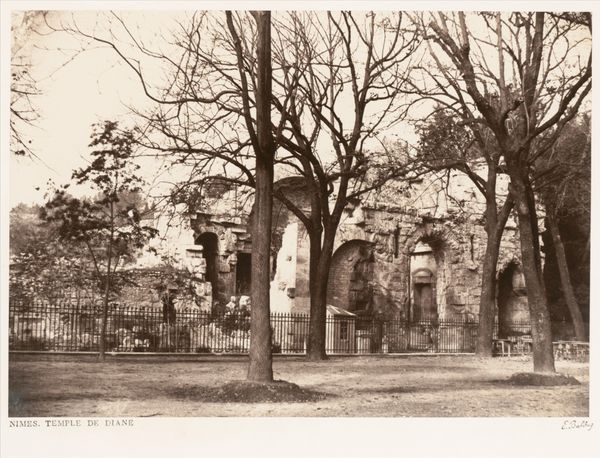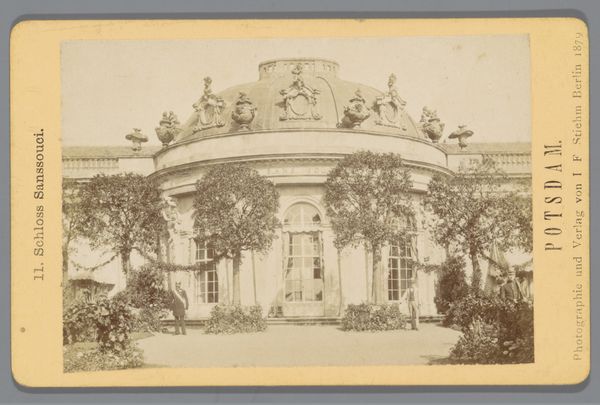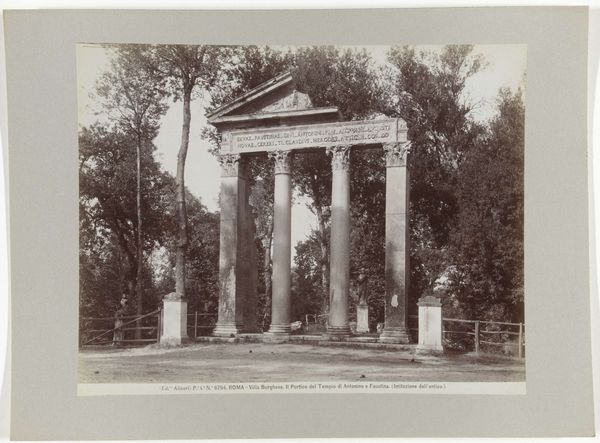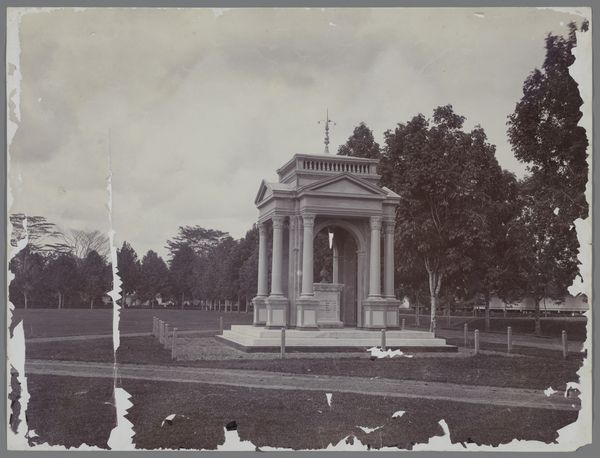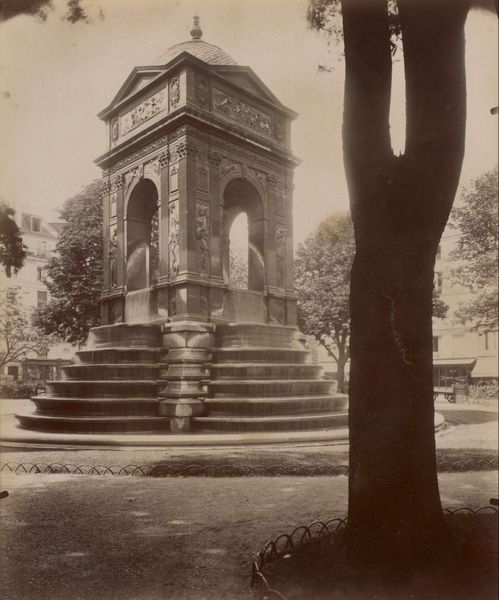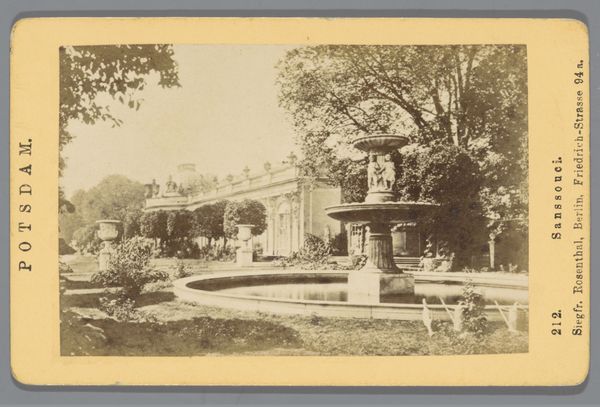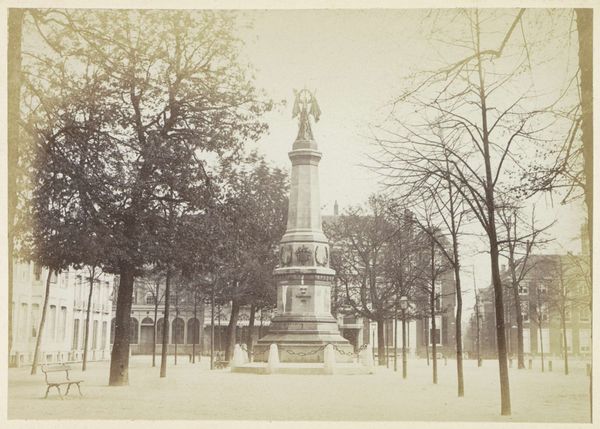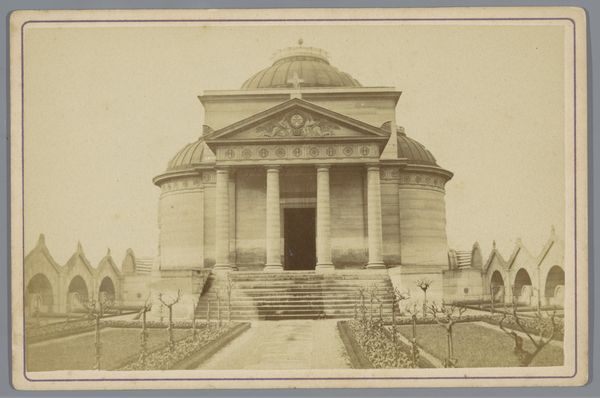
print, photography
#
historical design
# print
#
landscape
#
photography
#
orientalism
#
19th century
#
cityscape
#
islamic-art
Dimensions: height 210 mm, width 270 mm
Copyright: Rijks Museum: Open Domain
Curator: Looking at this print by Sébah & Joaillier, dating from somewhere between 1888 and 1900, my immediate sense is of melancholy. A rather somber, muted tonal palette seems to wash over this public space. Editor:Indeed. We have here "View of the Mihrişah Valide Sultan Fountain in Istanbul". It's quite interesting when considering its context as an object created within the Orientalist movement. This movement really sought to capture a sense of the “exotic” Near East. How does this photo fit, or perhaps, disrupt, such trends? Curator: Well, its formal qualities point to a complex relationship. The symmetry in the fountain’s architecture certainly brings a sense of harmony and balance. And look at the intricate details in the stone carving – almost as though frozen in time. However, this contrasts with the relatively unposed people that imbue an authenticity to it. There is definitely a nuanced approach to staging and lighting, carefully arranged yet with an undeniable documentarian effect. Editor: Right. It's not a staged scene purely for Western consumption, despite the Orientalist influences prevalent at the time. Consider that this was captured during a period of significant socio-political changes in the Ottoman Empire, when photography became a tool for documenting not just landscapes but also everyday life. The people around the fountain are just that—ordinary people inhabiting and animating the built environment, reflecting perhaps a more honest depiction. It makes us consider what public space means in an empire in transition. Curator: Absolutely. The relationship of these figures to the imposing fountain speaks to power, place, and representation. Semiotically speaking, these quiet details subtly alter its overall message, its inherent meaning beyond its subject. The soft lighting on their form creates a poignant effect. Editor: Exactly. And what stories can we tell by simply analyzing its tone? Photography at this time helped create stories of otherness while, simultaneously, beginning a record of life as it was actually lived. It's not merely about the aesthetic appreciation of an image; it prompts reflection on the social conditions that shaped both its production and reception. Curator: After this discussion, it does bring to mind new perspectives when interpreting the Orientalist period. Editor: Agreed. We see art here as so much more than a lens but an echo of the world's transformations at this time.
Comments
No comments
Be the first to comment and join the conversation on the ultimate creative platform.
